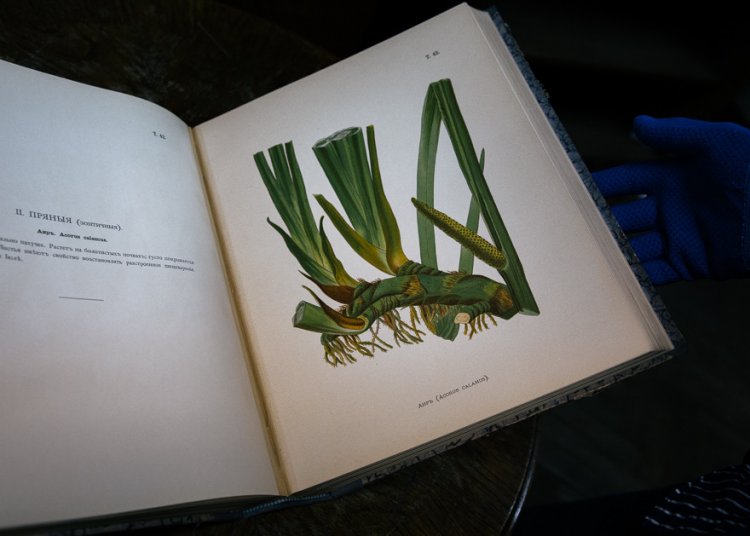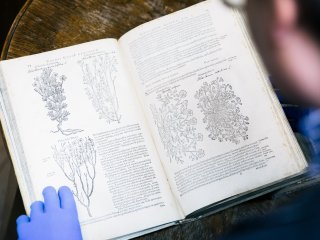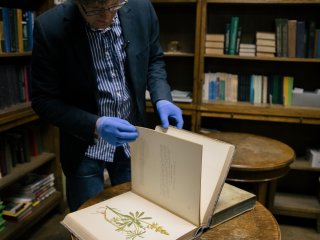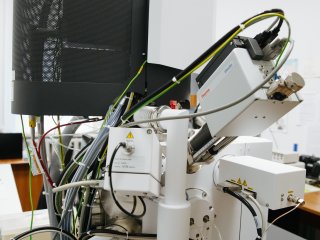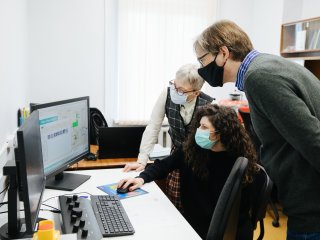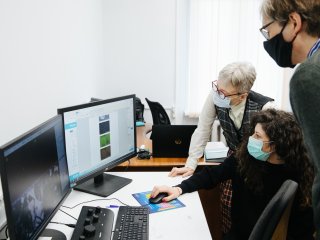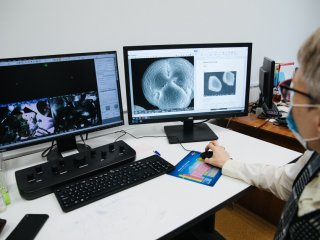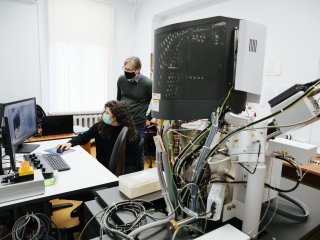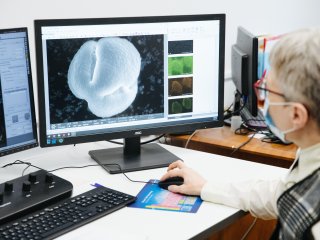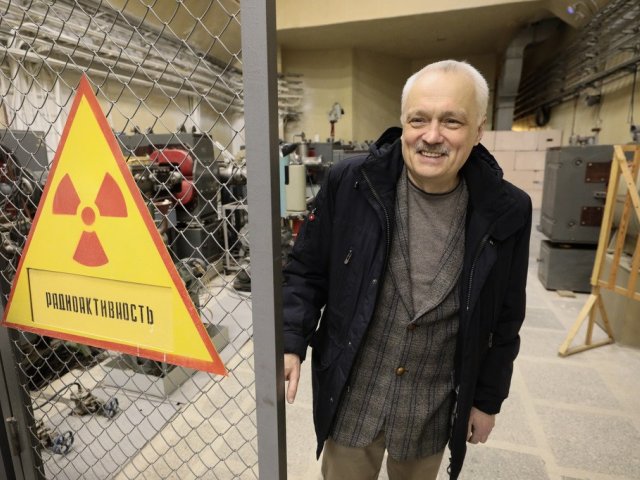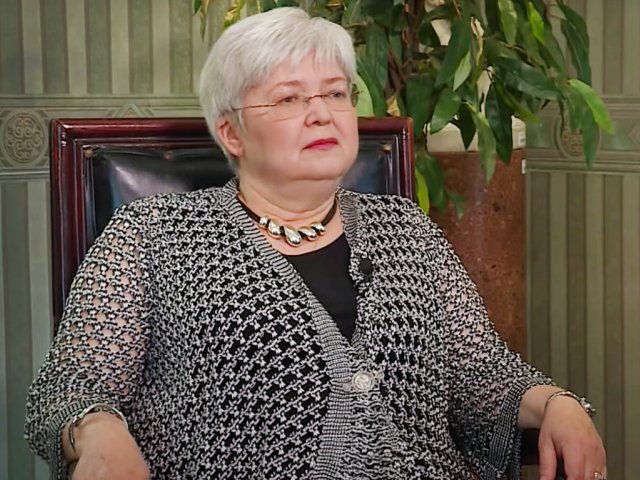As we know, botany is plant science. There were animals on Earth before there were people, and there were plants before there were animals. But what do we know about plants and do we really know that much of how they came into existence on Earth? Scientific Russia has discussed the origin of higher plants and the scientific experiments undertaken to study them with Dmitry Dmitrievich Sokolov, Doctor of Biological Sciences, Correspondent Member of the Russian Academy of Sciences, Head of High Plants Subdepartment at the Biology Department of Lomonosov Moscow State University.
- It is known that plants were among the first living organisms that started inhabiting our planet. What was it like?
- We are studying higher plants. They evolved as a group that mostly consisted of land plants. When plants made it to the dry land and how higher plants came about are among the greatest mysteries of our science. But how and when did all this happen? The most ancient pages in the history of virtually any group of organisms are wrapped in mystery. Name any group – there is a mystery about it. Solving mysteries is the most interesting thing of all. That is what we are doing science for. There is also a great interest in the secrets of the origins of flowering plants, which first appeared in the early Cretaceous period. The most ancient higher plants found were not whole plants, but one layer of the cytoderm of a specific cell – a spore (one of the lifecycle stages). In higher plants, this cell is covered in a special envelope of sporopollenin, a very strong biopolymer. It consists of most trivial elements – carbon, oxygen, and hydrogen, but the exact chemical structure of sporopollenin was only determined with sufficient accuracy a couple of years ago (and only for one plant species). We can find sporoderm in a fossilized form. It preserves well. Sporoderm can tell us about the origins of some higher plants. We know that mushrooms originated on the dry land at the same time as higher plants. They have been interacting from the start. We find fossil beds that developed a long time after plants first started growing on dry land, and they can give us an astounding amount of details on plants. Those are Lower Devonian deposits in North Scotland. We have detailed information on the lifecycle and structure of quite a large number of species of higher plants, which grew in the area in those distant years (approximately 400 million years ago). All those plants have some things in common, including small size: within 30 cm. But there were, at the same time, land organisms that stood up to 8 meters tall and were up to 1 meter in diameter. There is still debate going on as to which group those extinct giants belonged to. But it is almost certain that they were not higher plants.
- Dmitry Dmitrievich, would you tell us what the Higher Plants Subdepartment does?
- Broadly, we describe the diversity of higher plants. Many people might think that all those species are known to science already and have been researched in detail. In fact, scientists discover and describe huge numbers of new species on a regular basis. But that is not the main thing. Even species known to science are often poorly researched. There are species that scientist have never found at the time of blossoming, and we still don’t know, for example, what their petals and stamens are like. The internal constitution of plants at various stages of their development and special features of the surfaces of various structures that are examined under the microscope, reveal a world of information. We know how to extract and interpret such data. This is a well-established, regular process. Then, there is a question of why each plant is the way it is. What is the adaptive significance of particular attributes we observe, and are structural details observed always connected with some clear functions? How does the complex organism of a plant form in the process of individual development? The significance of this question goes beyond mere theory. It is closely connected to the microclonal propagation technologies that are commonly used now for practical purposes, including in our subdepartment. How did plants evolve? Everything about evolution is the subject of special interest to us. On the one hand, we learn about evolution from fossils, i.e., direct evidence. On the other hand, we have indirect, but most detailed evidence – from comparing DNA structures of various modern plant species. We can obtain huge amounts of information from that. Studying pollen grains is a separate area. Now, in the spring, people remember primarily that there is pollen allergy. Different people can be allergic to pollen of different plants, which blossom at different times. We have regular monitoring of concentrations of pollen of various plant species in the atmosphere, and not just of allergenic plants. This is a most important area for basic research. Pollen concentrations in the air change. Why does this happen? The sheaths of pollen grains and spores tend to preserve well in fossilized state. As I said before, they contain sporopollenin. Remains of pollen grains and spores enable reconstruction of changes in vegetation and climate in different timespans, and allow us to identify the periods of global warming and global cooling. Data from spore and pollen analysis are widely used by geologists, including for the purposes of mineral exploration.
- Do you use DNA analysis in your research projects?
- Of course. Modern biology would be impossible without molecular data, since the nucleic acid sequence provides a lot of information on how the plants evolved. An important problem in evolutionary biology is that there is only molecular data on modern and very recently extinct organisms. It is wonderful that we can extract DNA from an herbarium of specimens dating back to the 20th and 19th centuries and compare the specimens to each other and to living plants. However, there is no chance of studying, for instance, the DNA of plants the remains of which formed coal in the Carboniferous period. We only have their morphological and anatomical structures to tell us about the alliances of those fossils. This means that for a complete understanding of evolution of plants, we need most profound knowledge of the external and internal structures of both extinct and modern plants.
- What are you working on now? What are your current research projects in the subdepartment?
- We are studying blossoms. How did they originate? This is a great mystery. Jurassic plants lacked blossoms, yet there was a great variety of flowering plants in the subsequent Cretaceous period. People especially committed to finding the blossoms of Jurassic plants often do find them. They are probably mistaken. At least, the published discoveries of this kind have been successfully debunked so far. At present, we are researching a very ancient modern flowering plant – hornwort (Ceratophyllum). It’s one of those mysterious plants that quickly adapted to life underwater very early on, when the first flowering plants developed; even their blossoming and pollination take place underwater. There are such species, even though most higher plants grow on land. To understand how the evolution of blossoms progressed, it is vital to interpret what we see correctly. And that is not easy. For instance, there are different opinions as to which part of hornwort is its blossom!
- Very recently, a special electron high-resolution microscope was installed at the department. What is its main purpose? How is it going to work?
- Quattro S, a scanning electron microscope from Termo Fisher Scientific, allows: higher magnification imaging; deeper penetration into the fine structure of live organisms; working with material without a fine metal coating on it; analysis of the distribution of various chemical elements in the test specimen. Our previous scanning electron microscopy work always involved coating. We had to fix our wet, living object carefully using special agents, and then subject it to the so-called critical point drying to preserve its intravital surface properties. A certain combination of pressure and temperature enables the drying process without the phase transition. This allows us to dry the specimen without a surface film developing and causing major deformation of the specimen. Critical point drying leaves the surface nearly unchanged, but totally devoid of water. No fluid vapors is always a requirement when conventional scanning electron microscopes are used. In short, it is a rather complex methodology, but the main thing is that the surface may turn out to be almost but not entirely the same as with the live organism. This “almost” part becomes more critical as the magnification increases. The new microscope makes our work easier in many ways. Firstly, the object does not have to be dewatered, but can be examined in its intravital wet condition. Secondly, the surface does not need metal coating. Thus, we can immediately start working with the object, which is virtually in its lifetime state, with very high magnification. This opens great new possibilities.
- Is there any other modification of a microscope of this type that allows quality results?
- Of course, there are many such microscopes overseas. There are some in this country as well. Our job is to succeed using ideas and materials. To work with organisms never researched before. We have to focus on unique issues, unique objects. We have huge collections of live plants and plants, collected by special methods from various parts of Russia and many other regions on Earth. Thanks to the successful efforts of A. P. Seryogin and his team, one million of specimens from the Herbarium of the Moscow University have been scanned and made publicly available online. Unique collections of live plants are kept in the Botanical Gardens through daily efforts of most experienced specialists. They make precious material – the basis of our achievements in science.
This interview was conducted with the support from the Ministry of Science and Higher Education of the Russian Federation and the Russian Academy of Sciences.
Interviewer: Anna Posokhova


